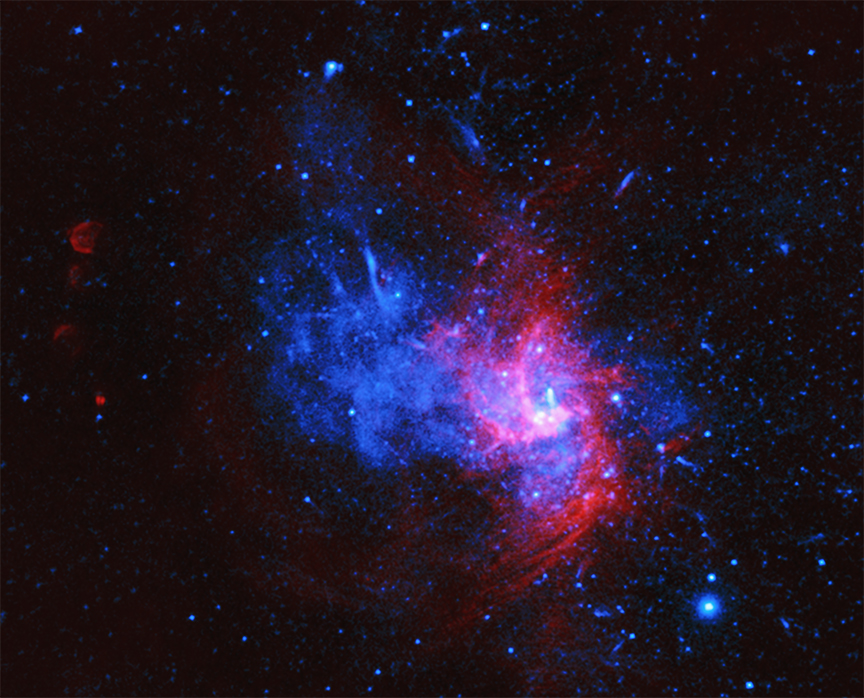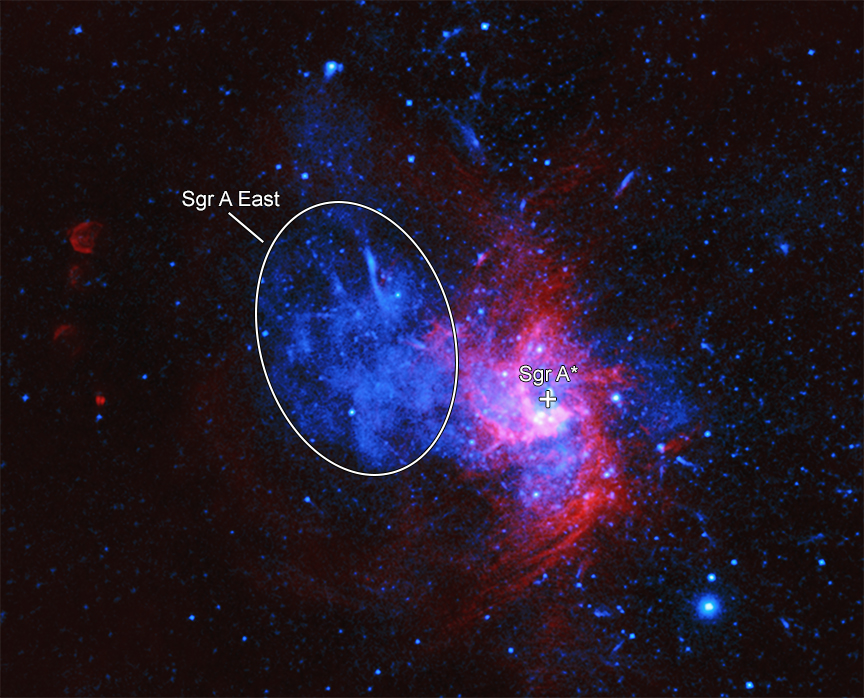Astronomers have found evidence for an unusual type of supernova near the center of the Milky Way galaxy. This composite image below contains data from NASA’s Chandra X-ray Observatory (blue) and the NSF’s Very Large Array (red) of the supernova remnant called Sagittarius A East, or Sgr A East for short. This object is located very close to the supermassive black hole in the Milky Way’s center, and likely overruns the disk of material surrounding the black hole.

Researchers were able to use Chandra observations targeting the supermassive black hole and the region around it for a total of about 35 days to study Sgr A East and find the unusual pattern of elements in the X-ray signature, or spectrum. An ellipse on the annotated version of the images outlines the region of the remnant where the Chandra spectra were obtained.

The X-ray spectrum of Sgr A East show that it is a strong candidate for the remains of a so-called Type Iax supernova, a special class of Type Ia supernova explosions that are used to accurately measure distances across space and study the expansion of the Universe. This result helps astronomers understand the different ways that white dwarf stars can explode.
Astronomers are still debating the cause of Type Iax supernova explosions, but the leading theory is that they involve thermonuclear reactions that travel much more slowly through the star than in normal Type Ia supernovas. This relatively slow walk of the blast leads to weaker explosions and, hence, different amounts of elements produced in the explosion. The researchers found this distinctive pattern of elements in the Chandra observations of Sgr A East.
Astronomers think that a rare type of explosion caused this supernova remnant.
NASA’s Chandra X-ray Observatory revealed clues in the stellar ashes.
This discovery helps teach us more about how certain stars can explode.
This work was published on Wednesday February 10th, 2021 in The Astrophysical Journal, with the title: “Chemical abundances in Sgr A East: evidence for a Type Iax supernova remnant” with lead author Dr. Ping Zhou from the Nanjing University in China.
